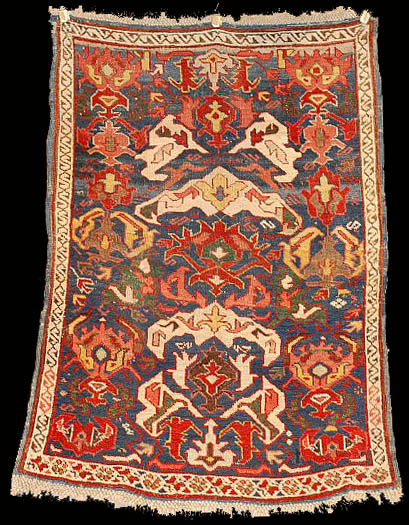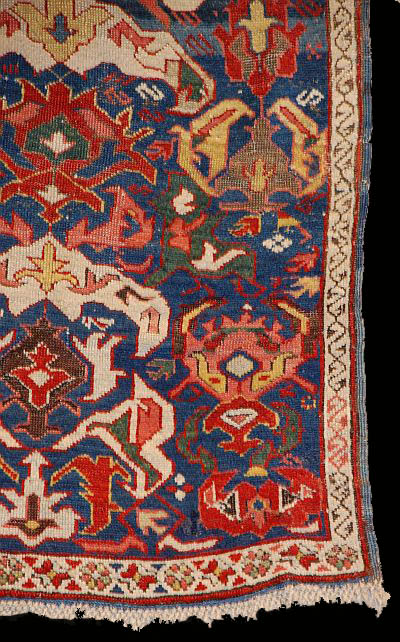|
Antique Kuba
rug, late 19th century, Southern Hillside Kuba Region, Devechi (Divichi)-Shabran
District, North East
Azerbaijan
|
|
The design of this
rug is a descendent of a very old one composed of repeated palmettes flanked
by curved leaves. It centers on three different connected and ascending
palmette (or shield) forms on the vertical axis of the field, each flanked
by “curled-leaf” motifs.
Below each palmette are leaf-like elements which project at 45 degrees.
These rugs can be compared to some of the 19th century dragon soumaks, and
presumably derive from 17th and 18th century dragon rugs from the Karabagh
area.
Bijov rugs are usually some of the largest of those from the eastern
Caucasus, so this one is unusual. While Bidjov rugs are often coarsely
woven, this one is finer. Its fineness has the effect of permitting the
design to retain its effectiveness despite the small format.
Information and picture from R.
JOHN HOWE: TEXTILES AND TEXT

 |


